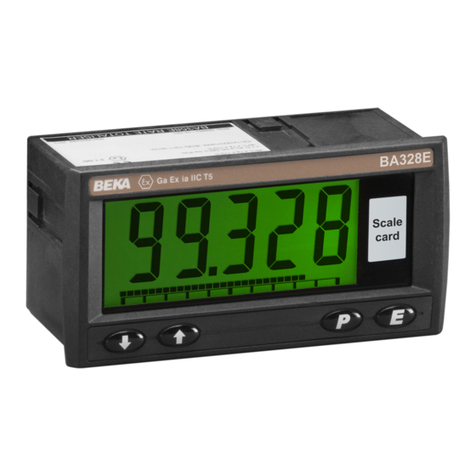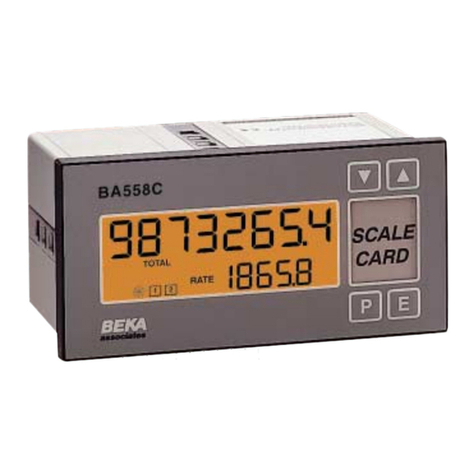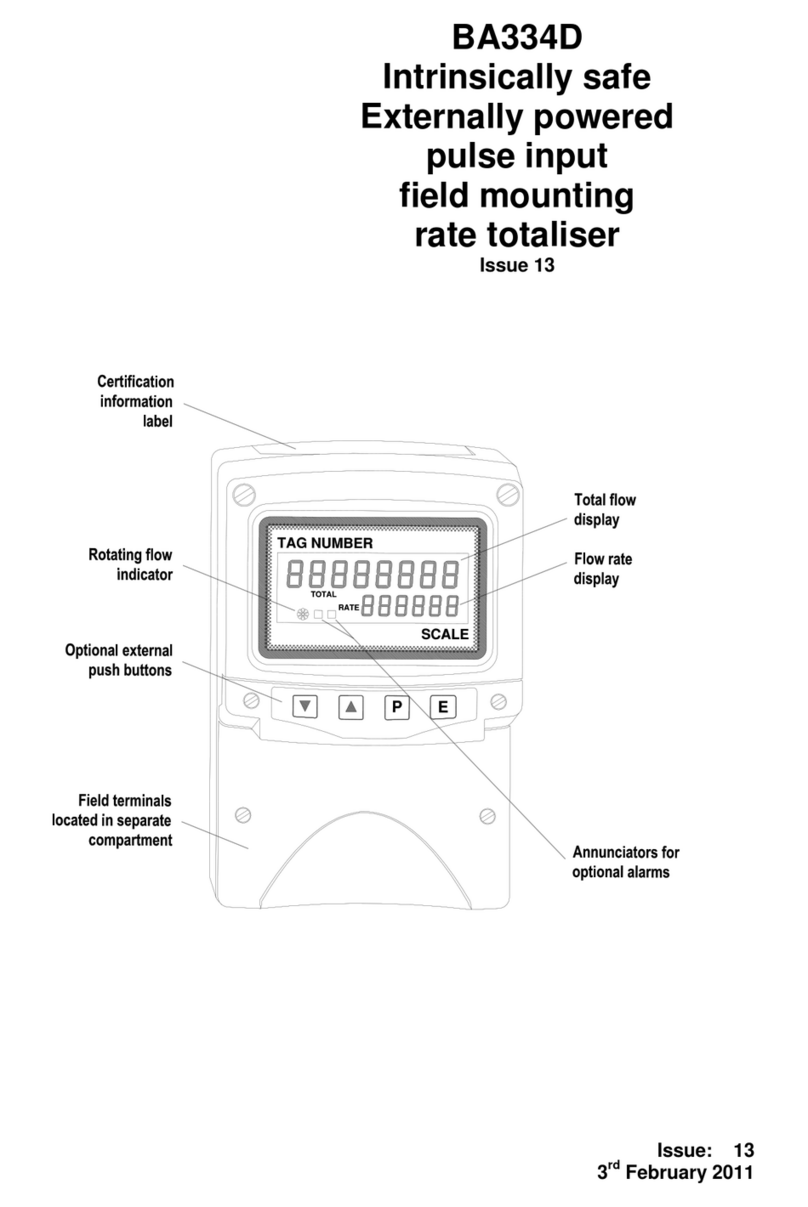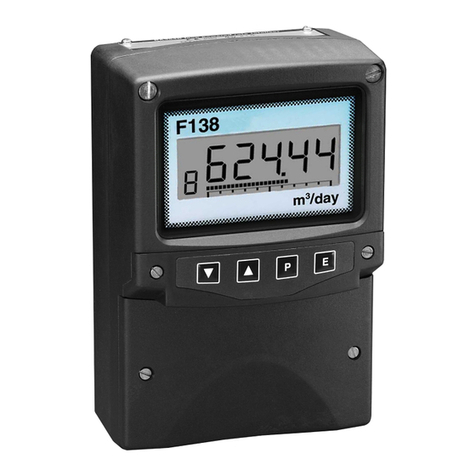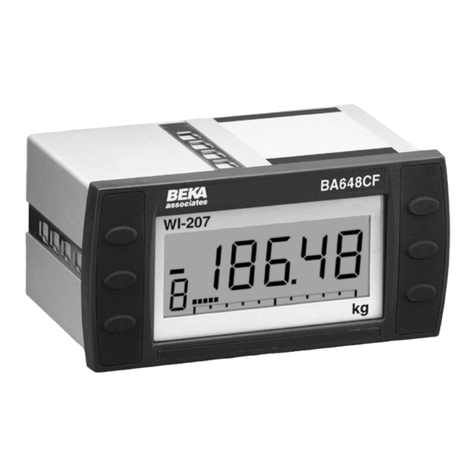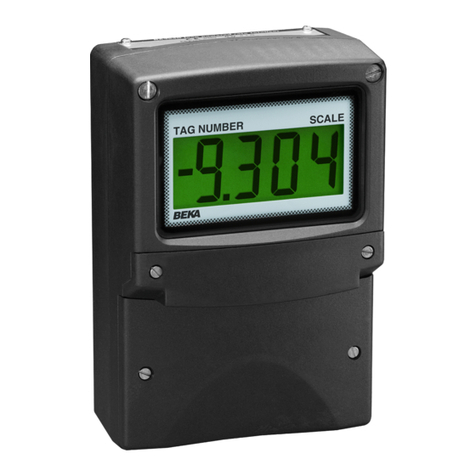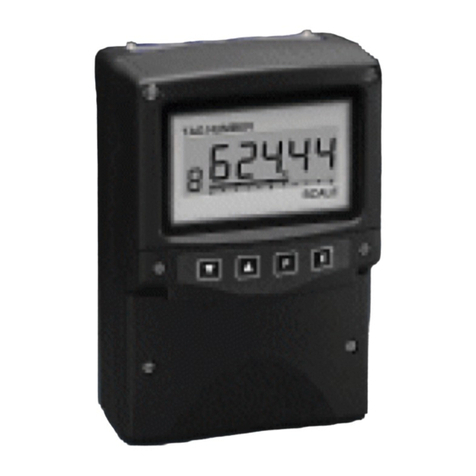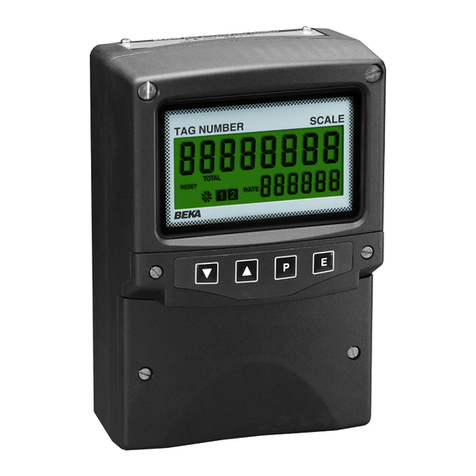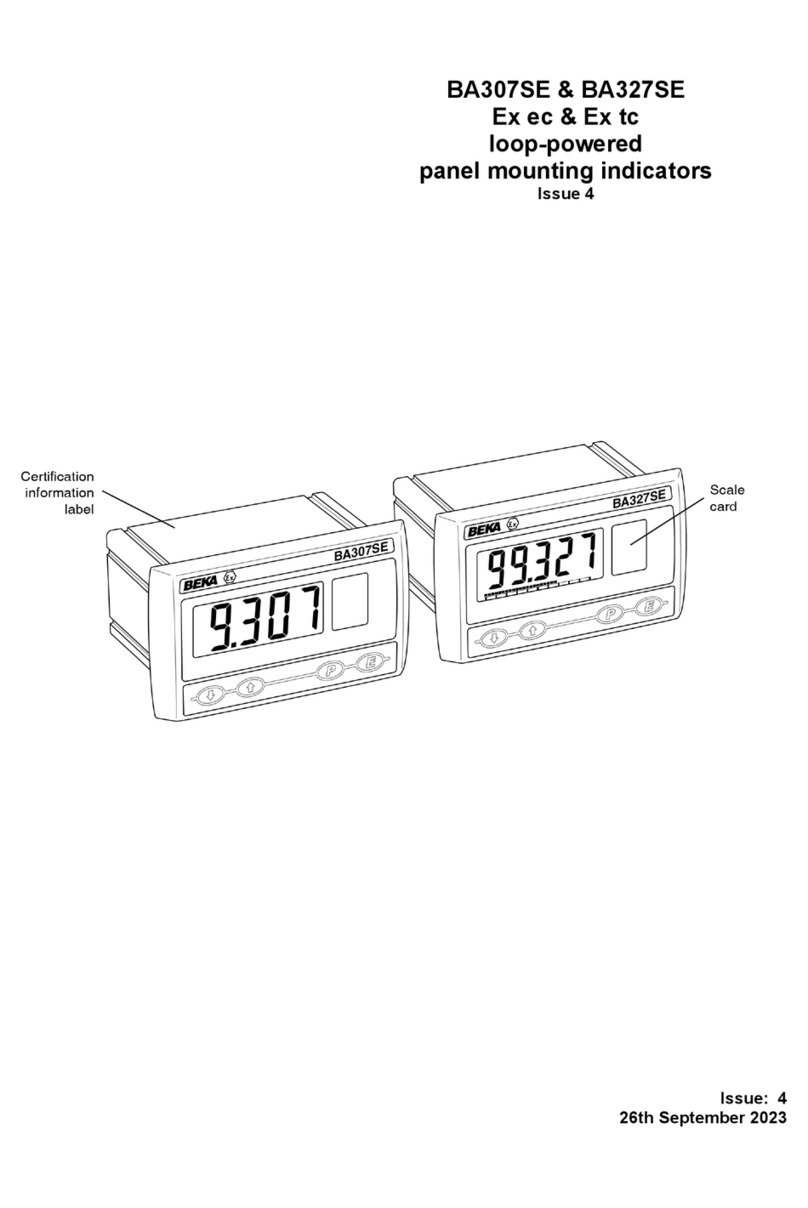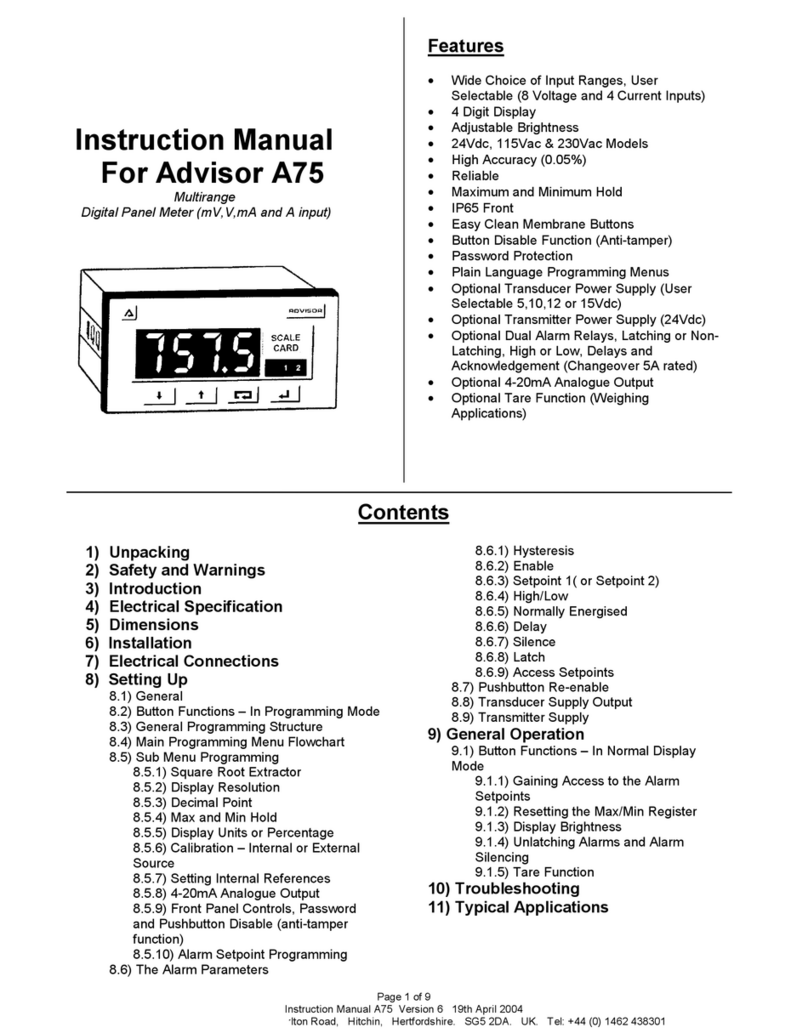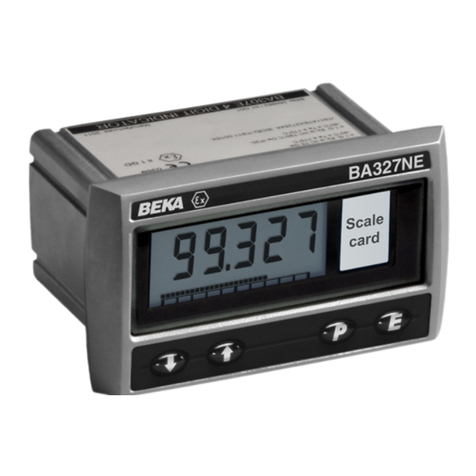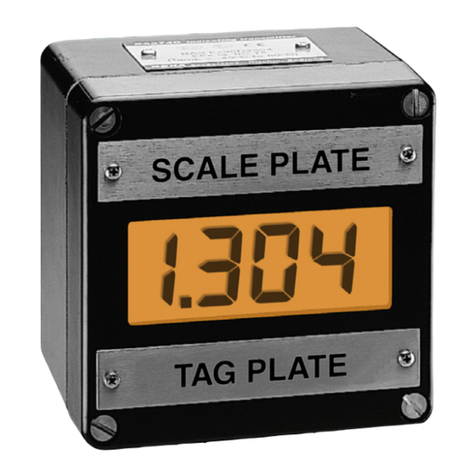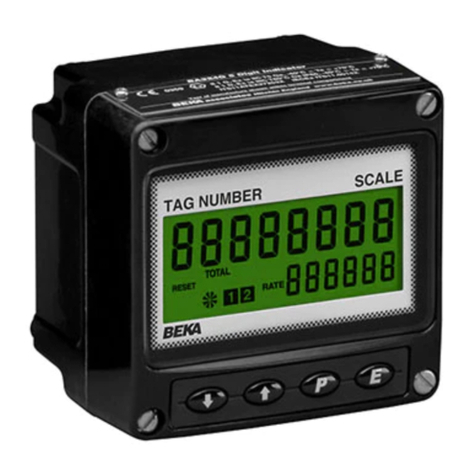
4.3 Installation Procedure
a. Cut the specified aperture in the panel. To
achieve an IP66 seal between the instrument
enclosure and the instrument panel the aperture
must have the tighter tolerances specified in
Figs 3A and 3B.
b. Slide the gasket over the body of the Rate
Totaliser before inserting the instrument into the
panel aperture.
c. Firstly ensure that all the panel mounting clamps
are closed by turning the knurled screws fully
anti clockwise until the two pips in the clamp foot
align with holes in the clamp body.
d. Place a clamp in the recess on each side of the
Rate Totaliser, pulling gently to slide it onto the
dovetail as shown in Fig 4. Push the knurled
screw slightly forward to engage the thread and
tighten by turning clockwise until it is just finger
tight. When the clamps are fitted ensure that
the gasket behind the front panel bezel is
correctly positioned before fully tightening the
clamps to secure the instrument. The maximum
recommended clamp tightening torque is 22cNm
(1.95 lbf in) which is approximately equivalent
to finger-tight plus one half turn. Do not over
tighten.
e. Four panel mounting clamps are required to
achieve an IP66 seal between a BA538E and
the instrument panel.
f. Connect the panel wiring to the rear terminal
block(s) as shown in Figs 3A and 3B. To
simplify installation, the terminals are removable
so that the panel wiring can be completed
before the instrument is installed. To prevent
vibration damage ensure that panel wiring is
supported.
Fig 4 Fitting panel mounting clamps
4.4 Scale card
The Rate Totaliser’s units of measurement are
shown on a printed scale card in a window at the
right hand side of the display. The scale card is
mounted on a flexible strip that is inserted into a slot
at the rear of the instrument as shown in Fig 5.
Thus the scale card can easily be changed without
removing the Rate Totaliser from the panel or
opening the instrument enclosure.
New Rate Totalisers are supplied with a printed
scale card showing the requested units of
measurement, if this information is not supplied
when the instrument is ordered a blank card will be
fitted.
A pack of self-adhesive scale cards printed with
common units of flow measurement is available as
an accessory from BEKA associates. Custom
printed scale cards can also be supplied.
To change a scale card, unclip the tapered end of
the flexible strip at the rear of the instrument by
gently pushing it upwards and pulling it out of the
enclosure. Peel the existing scale card from the
flexible strip and replace it with a new printed card,
which should be aligned as shown below. Do not fit
a new scale card on top of an existing card.
Install the new scale card by gently pushing the
flexible strip into the slot at the rear of the Rate
Totaliser, when it reaches the internal end-stop
secure it by pushing the end of the flexible strip
downwards so that the tapered section is held by the
rear panel.
Align the self-adhesive
printed scale card onto
the flexible strip and
insert the strip into the
Rate Totaliser as
shown below.
Fig 5 Inserting the flexible strip carrying the scale
card into slot at the rear of Rate Totaliser.
8





